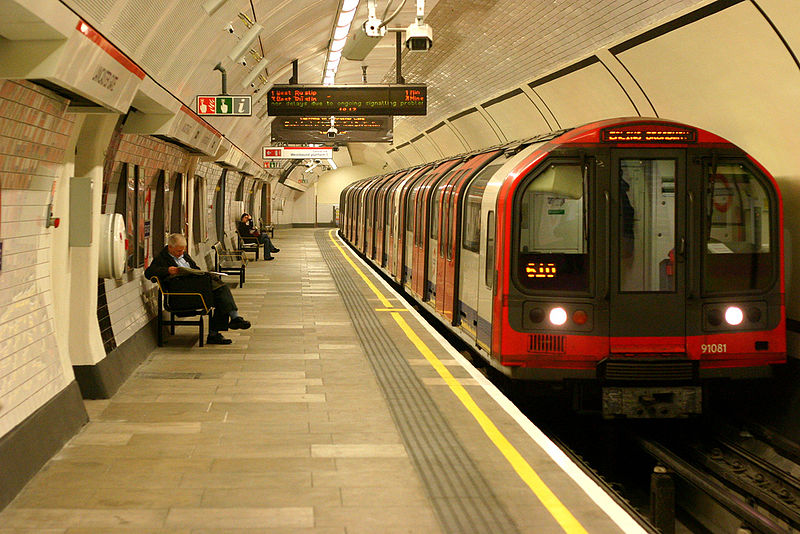Johnny Au
Senior Member
Maglev is expensive. I believe that there are no working Maglev systems in Canada.Maybe ICTS would be cheaper to maintain if it were a maglev like it was conceived to be.
Maglev is expensive. I believe that there are no working Maglev systems in Canada.Maybe ICTS would be cheaper to maintain if it were a maglev like it was conceived to be.
There is one very important part about the ART technology that you've forgotten to add.
It is hugely expensive to maintain, and hugely expensive to expand. It has all of the same sub-systems of a subway - lighting, signaling, traction power, etc. - and so you can't easily create low-cost expansions in locations like the middle of streets or on the ground of hydro corridors. It is to the point of being within the same costs as a subway on both, and yet with only half of the capacity.
Does underground LRT not require lighting, signaling, power, etc.
Are the maintenance costs for subways, SkyTrain, and underground LRT of similar magnitude?
Expansion is a red herring since I am sure TTC will say you can not operate a line if it is too long. I think Pearson to Malvern is probably long enough.




A SUBWAY, or METRO, is defined as an underground electric railroad. A subway can be heavy rail, light rail, or rubber-tyred. They can be of different sizes, in width, height, or lengths of cars.
I suppose you are catching me on a technicality. Of course I meant HRT. Based on your answer, I would assume the answer is NO difference in operating cost.
Does underground LRT not require lighting, signaling, power, etc.
Are the maintenance costs for subways, SkyTrain, and underground LRT of similar magnitude?
Expansion is a red herring since I am sure TTC will say you can not operate a line if it is too long. I think Pearson to Malvern is probably long enough.
A SUBWAY, or METRO, is defined as an underground electric railroad. A subway can be heavy rail, light rail, or rubber-tyred. They can be of different sizes, in width, height, or lengths of cars.
"In Vancouver ... one of the many complaints about the Canada Line is that it uses standard subway technology and not SkyTrain as the SkyTrain is noticeably faster and the Canada Line has already had reliability issues which the SkyTrain never has."
Did someone really just say that the SkyTrain in Vancouver has never had reliability issues? Um, the SkyTrain has reliability issues on almost a daily basis. It's a running (pardon the pun) joke. I take no position on the Canada Line, though anecdotally (granted, not to be confused with actual evidence), I've never heard a complaint about it or had cause to express one myself.
There is one very important part about the ART technology that you've forgotten to add.
It is hugely expensive to maintain, and hugely expensive to expand. It has all of the same sub-systems of a subway - lighting, signaling, traction power, etc. - and so you can't easily create low-cost expansions in locations like the middle of streets or on the ground of hydro corridors. It is to the point of being within the same costs as a subway on both, and yet with only half of the capacity.
The outer-most sections of the Brown (Ravenswood), Pink (Douglas/Cermak), and Purple (Evanston) Lines use grade crossings, but the Chicago L is most certainly a Metro; these are merely unique exceptions.
I wouldn't quite call Ottawa's system a Metro, but more of a high-concept LRT, like Calgary, Edmonton, or Buffalo. Buffalo's LRT is almost completely underground (exception being the downtown Main Street section), Edmonton the opposite (downtown being underground).
The Metro systems in the United States and Canada are as follows:
Boston Red, Orange and Blue Lines (except Ashmont-Mattapan "High Speed Line")
New York Subway
Port Authority Trans-Hudson*
SEPTA Market Street Elevated and Broad Street Subway
PATCO Camden Line*
Baltimore Metro Subway (not the LRT)
Washington Metro
Atlanta MARTA Rail
Miami Metrorail (not the Metromover)
Cleveland Red Line**
Chicago L
Los Angeles Metro Red and Purple Lines (not the Expo, Gold, Blue or Green Lines)
Bay Area Rapid Transit*
San Juan Tren Urbano***
Montreal Metro
Toronto Subway
Vancouver SkyTrain/Canada Line***
(* - operates more like a commuter-type operation than a traditional metro, but has most metro characteristics ** - low frequencies and shares track with light rail vehicles *** - light metro)




